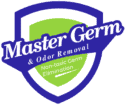What are the Main Chemicals in Odor Removal Products?
I came across this question and answered it online. I hope it’s helpful to you!
Here’s the original discussion:
https://www.quora.com/What-are-the-main-chemicals-in-odor-removal-products
Q: What are the main chemicals in odor removal products?
This is a great question, and the main differentiator for odor removal businesses.
I have used a number of chemicals in my career as a professional odor guy, someone who gets the call when all the other stuff didn’t work.
We primarily use chlorine dioxide, ClO2, as a gas vapor to treat smoke odors from fires and nicotine, marijuana odors, and cigarette odors:
https://mastergermandodorremoval.com/services-2/smoke-odor-removal/
as well as other kitchen cooking odors from burned meat and over-boiled eggs to curry cooking odors, etc. Here’s our quick overview of what we use most often:
https://mastergermandodorremoval.com/services/odor-removal/
This works great on oil-based odors, such as cooking odors that go up out of the pan on the stove in the oil droplets. The most common cooking odor we take care of is curry, which is the turmeric being aerosolized in the cooking oil. Most important is to clean the cabinets around the stove really well, and typically the top of the cabinets in the kitchen will end up coated with oil and dust, and needs to be first scraped off with a putty knife and then cleaned really well with something that will break down the oil AND help it come out of the wood the cabinet is constructed of. Here’s what to look for in cleaning, and the following video is a follow up from that house.
Search the Master Germ and Odor Removal channel for “Curry” for more information and to see the gas off procedure in progress. Here’s our curry odor removal page:
https://mastergermandodorremoval.com/services-2/curry-odor-removal/
I used a different oxidizers previously, and I couldn’t verify that it was genuinely non-toxic, so I quit using it and started using ClO2. Ozone is toxic but is rated for warehouses and parking garages and is an oxidizer, but we get calls to get rid of the ozone smell, which is sometimes called an ionizing treatment. It really doesn’t work for cigarette odors. Last week I did a house that had a Pure Air treatment (Energized Air, Energized Oxygen, Enhanced Oxygen, Ionizing Treatment, etc. are all new names for ozone) and it didn’t work, but the house remodel schedule went on as planned since workers were all scheduled since nobody noticed the cigarette odors since the ozone smell was so strong.
Another oxidizer I used was from a national brand (I owned a territory as a licensee) and we kept getting call backs for smoke odor jobs that didn’t work when we used a dry thermal fogger to apply a kerosene-based product. It is fun to watch as big puffs emanate from the fogger, but it wasn’t a reliable chemical.
ClO2 has been a very reliable oxidizer for us, and it’s used in treating drinking water, waste water, and neutralizing bacteria and fungi on fruits and vegetables so they last longer in shipping from the fields to the grocery store—it’s the reason strawberries stay their beautiful red color even though they’ve travelled many miles and have been in the grocery store a while prior to purchase.
Of course there are many other odor removal products, many of which contain olfactory desensitizers so that your nose won’t smell that particular odor as well. Cover up perfumes (like “odor bombs” in used car sales—we have a DIY kit that is better) and other masking agents are common, too; plug-ins are another popular example.
We have seen them all, but the simple chemical name of chlorine dioxide has proven most effective and reliable. We do use it sometimes as a spray, especially for pet odor removal, but always in conjunction with ClO2 used as a gas vapor.




